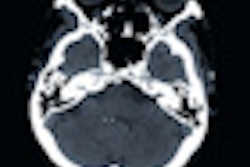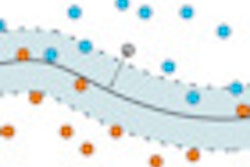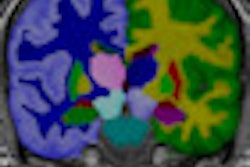TORONTO - MRI can detect signs of white-matter hyperintensity (WMH) in the elderly that may indicate three times the risk of developing dementia, according to a French study presented this week at the American Academy of Neurology's (AAN) annual meeting.
A research team led by Dr. Christophe Tzourio, Ph.D., wanted to investigate which of two potential markers better signaled the future development of dementia: white-matter hyperintensity or silent infarcts. The researchers drew their patient population from the Three City Study, a French population-based longitudinal research study of 9,264 participants from Bordeaux, Dijon, and Montpellier that was launched in 1999.
Tzourio, of the National Institute of Health and Medical Research (INSERM) U708 in Paris, and colleagues pulled a subset of 1,669 community-dwelling elderly individuals from Dijon who did not have dementia or a history of stroke at baseline. The subjects' mean age was 72.4 years, 39% were male, 80% were current drinkers, 40% had at least 12 years of education, 76% had hypertension, 57% had hypercholesterolemia, 22% were apolipoprotein E carriers, and 13% had depressive symptoms.
The researchers used T1-weighted MRI scans performed at baseline to measure the volume of white-matter hyperintensity and correlated the imaging findings to patient outcomes. The patients' average WMH volume was 5.5 cm3, with a standard deviation of 5.1 cm3.
During the study's median follow-up of 3.5 years, 23 subjects developed dementia. These cases comprised 11 with Alzheimer's disease, three with vascular dementia, and nine with other forms of dementia.
The researchers found a hazard ratio (HR) of 3.0 (95% confidence interval [CI]: 1.2-7.1) for dementia among subjects who had WMH volume in the highest quartile of the study population. In contrast, silent infarcts were not correlated to the development of dementia: Subjects with one or more silent infarcts had a nonstatistically significant hazard ratio of 1.6 (95% CI: 0.5-5.2).
Tzourio and his co-investigators also found that after adjusting for both WMH volume and number of silent infarcts, the hazard ratio for dementia remained significant among those with high total WMH volume, at 2.9 (95% CI: 1.2-7.1). It remained nonstatistically significant among those with at least one silent infarct, at 1.0 (95% CI: 0.3-3.7).
This study contradicts the results of the Rotterdam study, which found that the presence of silent brain infarcts is associated with a hazard ratio of 2.26 for developing dementia (95% CI: 1.09-4.70) (New England Journal of Medicine, March 2003, Vol. 348:13, pp. 1215-1222).
However, the new findings are congruent with those of a recent analysis of the Framingham Offspring Study. The analysis showed that WMH volume, extensive WMH volume, and brain infarcts were all associated with a significantly increased risk of dementia (Stroke, April 2010, Vol. 41:4, pp. 600-606).
The difference between the new study's results and the Rotterdam findings may be at least partially accounted for by Tzourio's team using MR slices less than 1-mm thick to examine the areas believed to contain silent infarcts to ensure they were not actually perivascular spaces, he commented.
"All in all, our findings mean that all of these small vascular lesions of the brain are indeed risk factors for Alzheimer's disease and dementia," Tzourio said. "Therefore, we might be able to prevent them from developing [dementia] by using antihypertensive and antidiabetes drugs. We are currently trying to set up a trial of such agents."
By Rosemary Frei
AuntMinnie.com contributing writer
April 14, 2010
Related Reading
Hypertension linked to white-matter disease progression: study, January 8, 2010
DTI beats standard MRI in predicting early memory loss, study shows, January 6, 2010
1.5T MRI with continuous ASL may detect early Alzheimer's, December 12, 2009
ASL-MRI identifies mild cases of Alzheimer's in elderly patients, November 10, 2009
Copyright © 2010 AuntMinnie.com



















